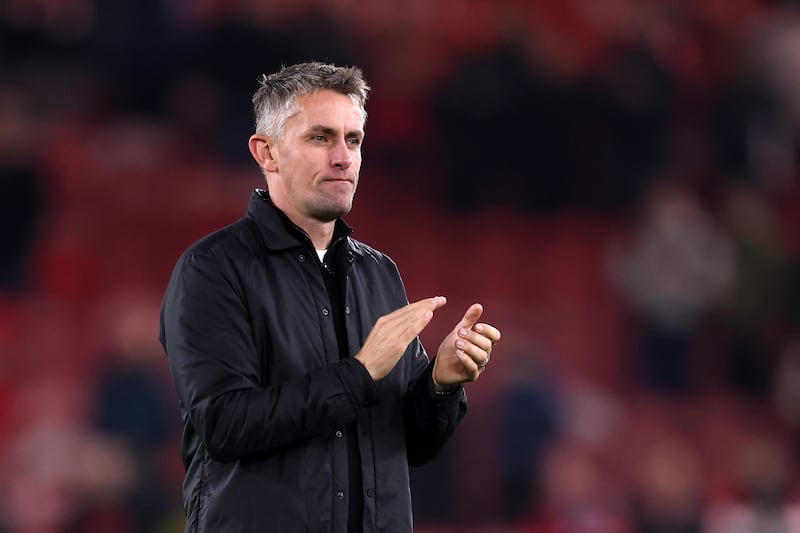Right before Covid hit, Pamela Anderson was returning home to Canada from Marseilles, in the south of France. Not just any old place in Canada but Ladysmith, on Vancouver Island, and the white clapboard house where she grew up. “Scene of the crime”, she calls it. In France she’d been living with the footballer Adil Rami for a year, but she’d had her heart broken. He wasn’t just explosively jealous, she learned, but still in a relationship with a woman with whom he had children. Just date someone normal, she thought, the spectre of her rock-star former husbands Tommy Lee and Kid Rock perhaps kicking doors in the back of her mind. Renovations were beginning on her new-old home, and Anderson’s eye alighted on one of the contractors. Normal. A year later and 11kg heavier from their nightly beer sessions, she sat on the sofa willing – desperately willing – her fifth husband to say something interesting. “Oh boy,” she sighs now. “Normal was the worst.”
So, another divorce under her belt, Anderson swore off men and took a long, hard look at her life. She went into cupboards and attics, emptying them of memories – journals, letters, news and talkshow footage, home videotapes (as we know, she’s an inveterate taper) – and tried to map her life. What happened to that tomboy kid she once was, with the freckles and the dove-grey eyes? Why did her life seem to run in crazy chicanes around toxic relationships? Not even she could make sense of her haphazard career trajectory.
Few need reminding that Anderson came to the public’s attention by way of Playboy magazine and Baywatch, the TV soap that ran from 1992 to 1997, or that, in 1996, stolen private footage of her and Tommy Lee having sex went viral on the fledgling world wide web, netting $77 million, or about €70 million, in 12 months for the illegal distributors. Anderson never benefited one cent. Instead her career plummeted, her marriage foundered and she became public hussy No 1. At times she thought: “Why do they hate me so much? Why do these grown men hate me?”
Are you kidding? If I’d had a therapist, do you think any of this would have happened?
But also: why did she play ball? Why did she put up with the ritual humiliation? Why did she sit under the studio lights time and again, comedians making the same lame joke for 10, 15, 25 years? (The English comedian Alan Carr in 2010: “It’s fun being screwed, isn’t it, Pammy? I’ve seen the tape.”) What took her from one arguably bad decision (say, Big Brother 2011) to the next (German Big Brother 2013)?
RM Block
There were plenty of actual bad boyfriends, too. “After the tape it wasn’t like I was attracting men who had the best of intentions.” In 2006 she married and filed for divorce from Kid Rock. In 2007 she married and left the poker player Rick Salomon: “He ended up being a big drug addict. We found a crack pipe in the Christmas tree.” (He still denies this, claiming it was somebody else’s.) She remarried Salomon in 2014, after he “got clean”, and divorced him again in 2015. She says she would have married her friend Julian Assange, the WikiLeaks activist, if it would have got him out of jail. In early 2020 she married an old suitor, Jon Peters, but later denied the union was ever legal; in December that year she married “normal” Dan Hayhurst but left him soon after. She completely abandoned herself, she thinks now. “It’s a form of suicide.” If it weren’t for her sons, Brandon and Dylan Lee, she says, she wouldn’t be here. “Over the last 20 years I went missing. MIA even to myself. I was drinking, I was trying drugs – so not me. I just went off the rails.” She was “difficult” at work. “Unmanageable, they called me.” Did she have therapy? “Are you kidding? If I’d had a therapist, do you think any of this would have happened?”
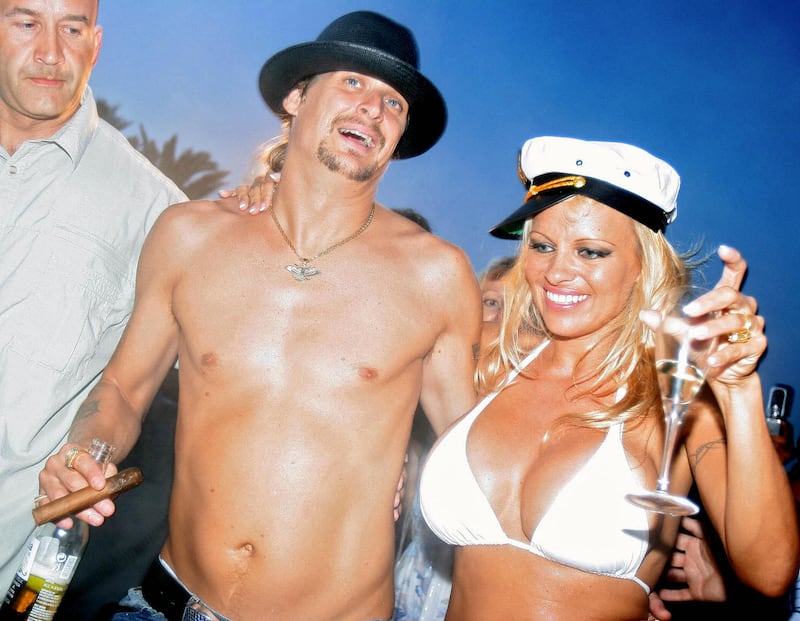
So, in January 2022, she gave herself a goal: “Don’t meet any men. Just focus ... just be in love with myself.” She pauses. “Believe me, I’ve been restless. I’ve thought: ‘Well, maybe I should just call ...?’ Then: ‘No.’”
Today she’s 12 months clean of men, so to speak, and has plenty to show for the time in recovery. In addition to stepping on to Broadway as Roxie in Chicago last April, she has written a memoir, Love, Pamela, and, encouraged by her sons, has made a revealing documentary about her life, Pamela: A Love Story, which is what brings me to her beachfront hotel in Santa Monica. Anderson is digging in her bag for throat sweets and a honey-and-lemon lollipop (“not vegan, I’m afraid”), expressing maternal concern about my hoarse voice. No protest can stop her loading the table in front of me with hot drinks and vegetable sticks. “Do we have vitamin C?” she asks her assistant.
The hair is instantly recognisable (“Scandinavian Blonde $5 box”), though a little warmer than the lightning flash of Baywatch days. The voice has the soft buoyancy of Marilyn Monroe – whom she references in our photo shoot – and there’s that toughness, undercut with wit and a mischievous vulnerability that reminds me somehow of Dolly Parton. The forerunners for her Baywatch look were Brigitte Bardot, Jayne Mansfield, Jean Harlow; it’s the male-fantasy prototype that stretches back to Botticelli’s Venus, with her prodigious hair, pert boobs and oyster shell. Anderson took the cat’s eyes, pencil brows and the Marie Antoinette hairstack and gave it some extra fire: something ravenous, uncut and peculiarly 1990s. Her story is about love addiction, sure, but also of living on the frontline of that era.
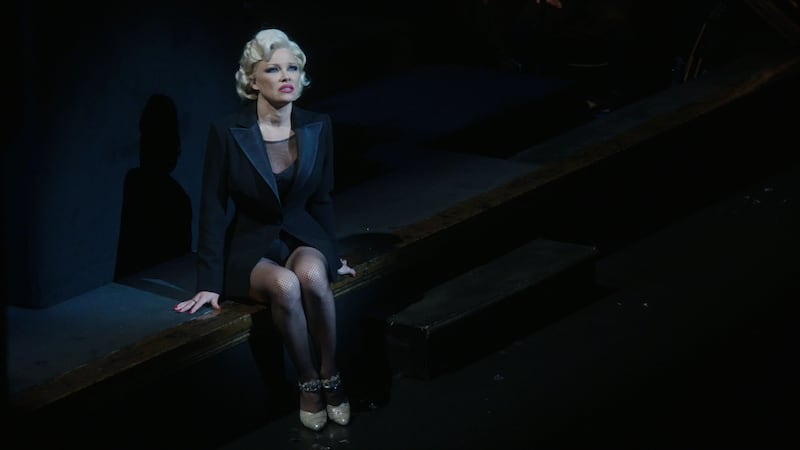
In case anyone is still on the fence about how toxic it was for women in the public eye in that decade, Anderson’s story lays it bare. Here’s an early exchange between young Anderson and an interviewer on NBC: “I’ve never sat across from an interview subject before and said, ‘May we talk briefly about your breasts?’” Here’s Larry King: “Have you ever had work done?” Anderson: “Why, yes, these are implants.” King: “Oh, they are?” Anderson laughs: a mix of exasperation and embarrassment. King, aggressive: “Are they, or aren’t they?” Anderson, sighing: “Yes, they are.”
Here’s an exchange with a paparazzo outside the Viper Rooms at 2am the first time she went out after the birth of her son Brandon in 1996. Anderson: “How dare you spray f***ing pepper spray [at me].” Pap: “You’re drunk, sweetie. Where’s your child this time of the morning?” Shouting: “Where. Is. Your. Baby?” Anderson: “With my mother, you f***ing asshole.”
When you see your boyfriend washing his penis in the sink, that’s a sign that they’re probably having an affair
After the tape was stolen things got darker still. She repeatedly told her “friend” Jay Leno in 1996 that his jokes about the tape were “not funny”: “This is devastating to us.” But Leno was not listening. No one was listening. Anderson was visibly upset but stayed plucky. It’s as if she believes that if she keeps telling the truth, keeps being her nice, funny, sweet self, people will check themselves. And what were her alternatives if she wanted to get on with her career and survive?
When it became clear no one was interested in moving on, that the typecast was eternal, Anderson tried something else. She’d take the insults, the caricaturing, she’d take them with a big bold smile, but she wouldn’t take the money. In 2005 Comedy Central asked her to do a Roast. “I said I would do it but only if they gave $250,000 to PETA [People for the Ethical Treatment of Animals].” She was introduced thus: “Thank you for agreeing to get f***ed on camera one last time.” The cartoon had taken over.
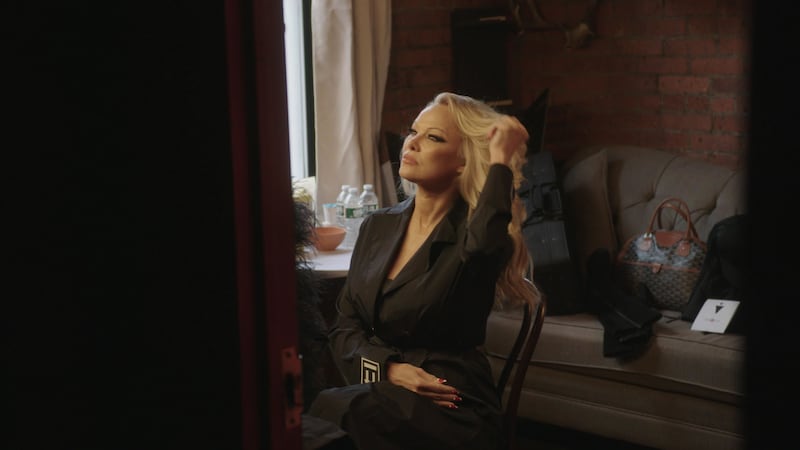
Pamela Anderson was 22, with scrunch-dried hair and a tiny waist, when she was spotted at a Canadian football game by a Labatt’s Beer scout and made into their Blue Zone Girl. Back then there was something unnameable and natural in her charm that read as simultaneously ordinary and, to a certain type of man, pure dripping sex. In Los Angeles, Playboy’s picture editor Marilyn Grabowski came across her image, stubbed out her cigarette and picked up the telephone.
In Vancouver, Anderson was working in a tanning salon and living with a photographer called Michael. A previous boyfriend had thrown her out of a moving car, but Michael was a cheat. “When you see your boyfriend washing his penis in the sink, that’s a sign that they’re probably having an affair,” she says, deadpan. “I wrote it down: ‘Washing penis in the sink: suspicious.’” On hearing the word “Playboy”, Michael “ran into the kitchen and threw a tray of silverware at my head”.
She arrived in Los Angeles, her first time on a plane, and at the Playboy mansion she was whisked past five-metre portraits of naked women and into “beauty”, where her hair was put in tinfoil and her toes “rubbed and polished”. She had to be coaxed out of her underwear, “which I was hanging on to for dear life”, because wardrobe for her first shoot was a boater, school blazer and tie, and nothing else. Afterwards, she threw up.
The mansion was heaving with actors, musicians, “philanthropists”, artists. She spied Tony Curtis, Scott Baio, James Caan, Sean Penn and Jack Nicholson alongside “beautiful women in long silk gowns, Monique St Pierre with cropped hair like Michelle Pfeiffer”. Standing there in her acid-wash jeans, Nirvana T-shirt and “those socks with the balls on the back”, Anderson thought, How can I be more like them? Kimberley Hefner confided: “You know they all have surgery?” “I was, like, ‘Really? Where do I sign up?’ Not a lot of thinking went into that decision,” Anderson says, regretful. “Not a lot of thinking went into anything.”
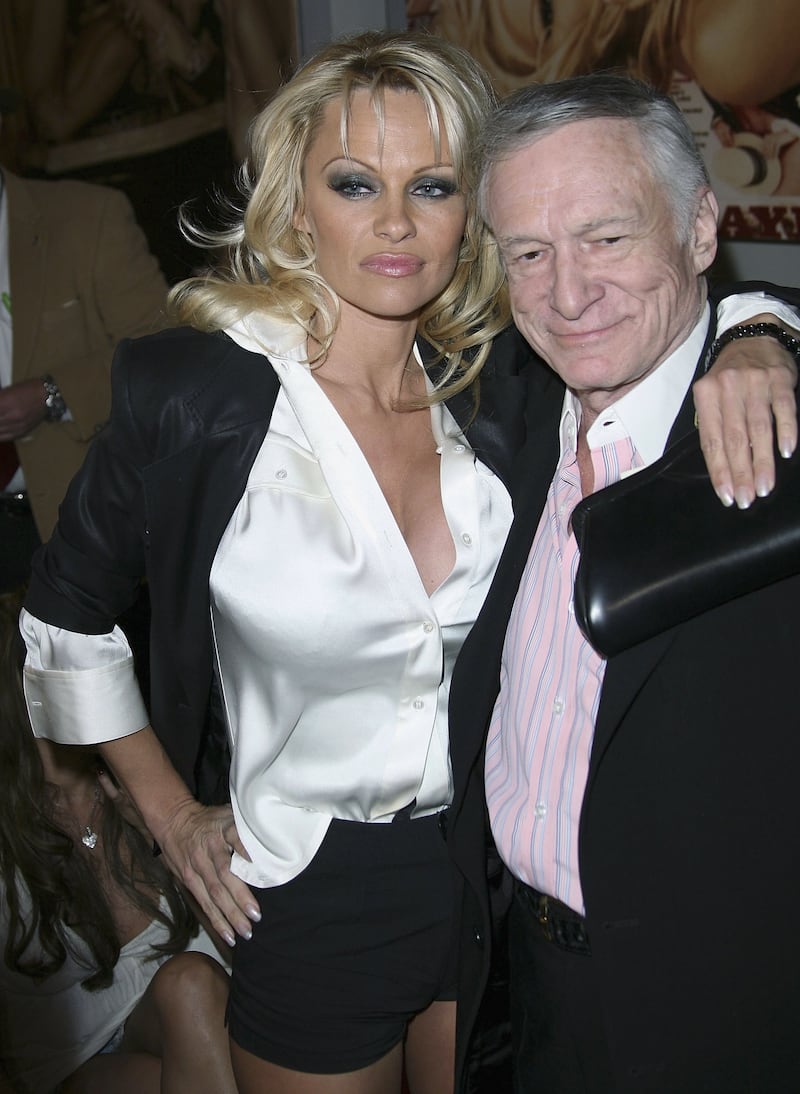
Try as I might – in person and follow-up emails – I cannot get Anderson to condemn Hugh Hefner as a dirty old pervert: one who played a founding role in the industrialisation of “glamour”-model exploitation. Anderson is loyal to a fault. She views Playboy as an academy of sorts. She believes it helped young women, some of whom – possibly many, “I can only guess” – were escaping really bad stuff at home. She is generous, even after saying Hef would order them to get naked in the “grotto” – Playboy’s overheated pool – because “clothes lint gets in the filters”. “He was the first gentleman I ever met. The first person who spoke that way: ‘Darling, darling.’ The smoking jackets, the black tie; it was mysterious and theatrical. I’d never been anywhere where you wore a suit.” Plus, he offered to pay her properly: $15,000 to be the centrefold in February 1990.
Of the time in general, she says: “I was pretty naive.” But as her memoirs roll out story after gold-plated story of sexist excess, I think: who’d want to be worldly? Here, she first met the producer Jon Peters, who introduced himself with his achievements – Rain Man, Batman, A Star Is Born – before installing her in a house next to Ronald Reagan’s in Bel Air. He sent daily presents – from Cartier, Ralph Lauren, Azzedine Alaïa – by chauffeur. A backless tux like the one in Flashdance; jodhpurs and riding boots. She says it was like Pretty Woman. He gave her a Tiffany Filofax, a Cartier Tank watch, a diamond tennis bracelet. “He asked for head rubs and for me to tickle his neck, but no more than that,” she writes. She moved out on the advice of a friend.
There were others. Someone offered $10,000 just to have a Jacuzzi with her (“That sounds more than a Jacuzzi,” she said, declining); someone else thousands a day to sit by a pool on a remote island (“I don’t think so”). Her ability to sidestep situations like this was less to do with savoir faire and more “because I was like Mr Magoo” – in other words, blind lucky. Famous men begged to meet her, not least Fidel Castro, president of Cuba. She missed a call from John F Kennedy jnr – whom she was “too shy” to call back. The actor Sylvester Stallone offered her a condo and a Porsche to be his No 1 girl. “And I was, like, ‘Does that mean there’s a No 2?’”
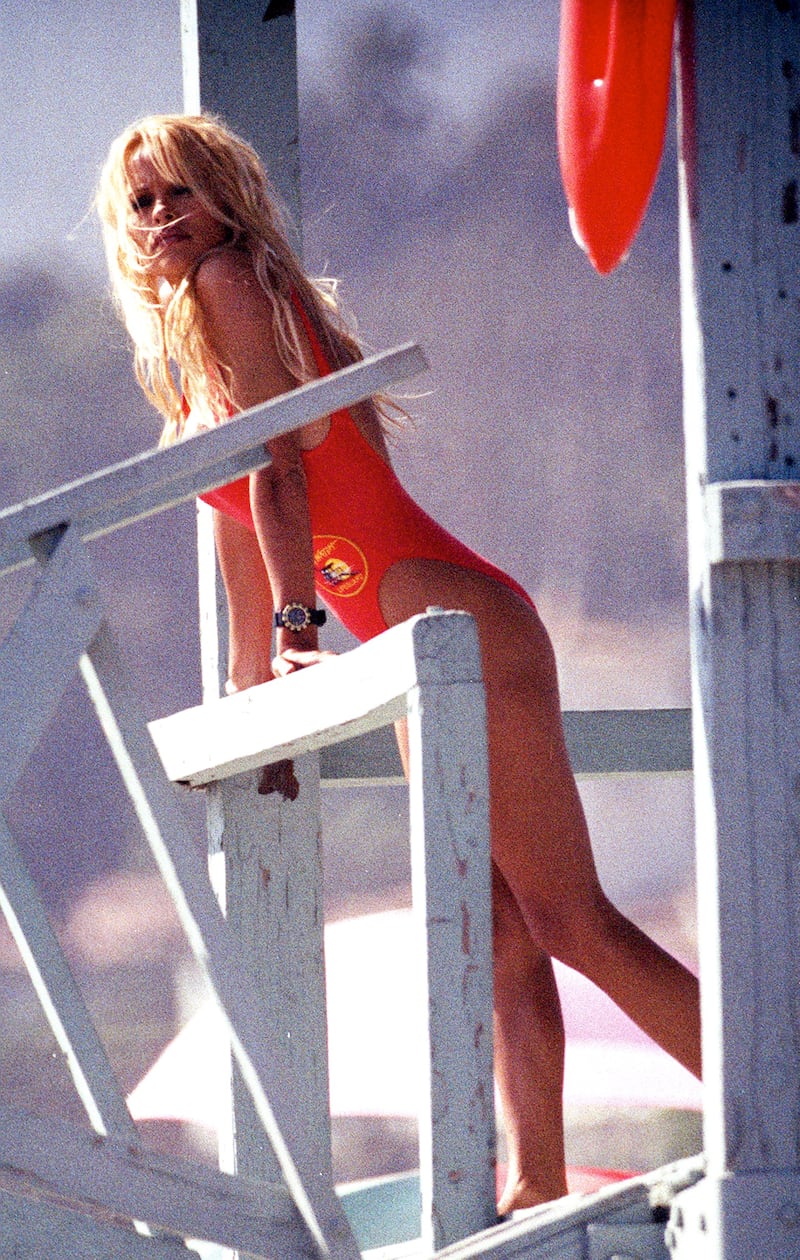
Grabowski described Anderson as “Playboy’s DNA”. Baywatch asked her to audition for their show 12 times – persisting even when she didn’t show up. She laughs now at her first notes from the director: “Pretend it’s real!” But once she was in that red bathing suit playing CJ, there was no looking back. Baywatch became the most watched TV series in the world, with weekly audiences of 1.1 billion in 142 countries. (Many insisted on “Pamela clauses”, buying only episodes she was in.)
Her relationship with Tommy Lee, the Mötley Crüe drummer – they met on New Year’s Eve 1994, then he bombarded her with 40 or 50 calls a day before following her to a photo shoot in Cancún, where they married four days later in their swimmers on a beach – was regurgitated in the recent Pam & Tommy miniseries starring Lily James. She feels “violated” by its maker, Hulu, which never got in touch. “How are they allowed to do that?” It purported to show her sympathetically but really it was another instance of her life pillaged for others’ profit. James played Anderson without any of her real-life moxie. “I heard she’d been nominated for an Emmy, but maybe that was a joke,” she says. (It’s not.) She backtracks. “It’s not her fault; it’s a job. But whoever created it – well, it just feels like something else stolen.”
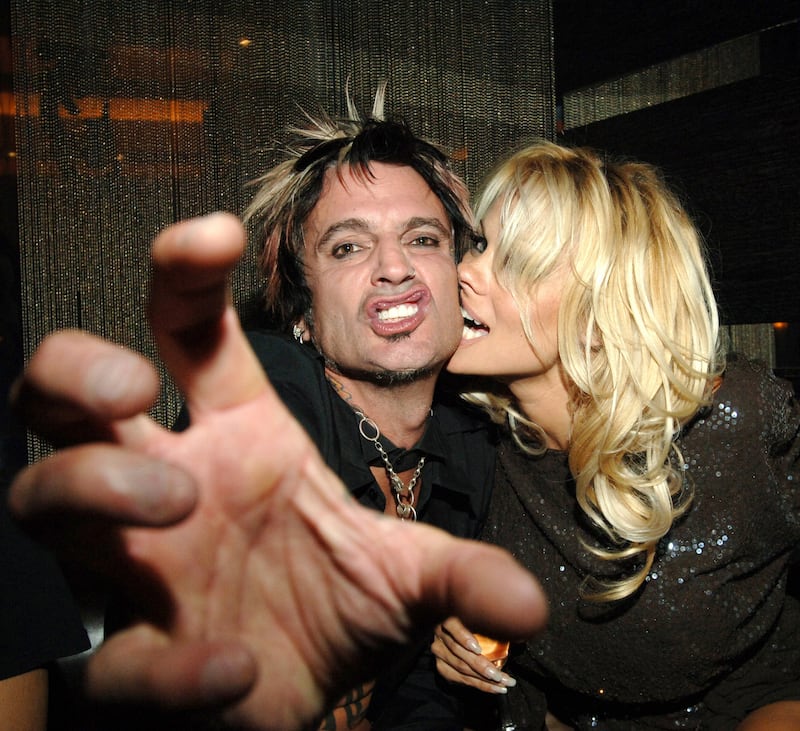
She had almost sidestepped Lee, too, telling the hotel if a tattooed man showed up not to let him in. Finally, she caved, agreeing to meet for a drink – into which he’d slipped Ecstasy. “I didn’t even know what it was.”
All the red flags, I say, and she sighs. She sighs a lot when talking about Lee. “Yes, well. But the love of my life was Tommy. And I know it wasn’t perfect but, you know, no one’s perfect.” We both laugh. “Oh, okay, perfect for me. Two imperfect, crazy people. We made two beautiful babies, and so I don’t have any regrets.”
Certainly, they had a wild, childlike type of fun. Lee installed a swing above his piano where Anderson would sway naked while he played. They threw monster parties, but also tended the garden, played with their dogs. Then her workload exploded. Cast in a Barbarella reboot called Barb Wire, she began filming in the evening around her day job. To help with exhaustion, a girlfriend introduced her to ephedrine, and “I liked how the pills kept me awake and I could get a lot done.”
Bigger red flags came next. Lee would arrive on set every day, claiming “wife time”. “Tommy was so jealous,” she says. “I thought that’s what love is.” When they saw his black Ferrari Testarossa coming, the crew changed the scripts because Lee would stand behind the camera and glower at any suggestion of male contact. In her journal, she wrote of one Baywatch scene: “I had to kiss David Chokachi but I didn’t tell Tommy. He lost it. He trashed my trailer on the set, put his fist through a cabinet. I apologised for not telling him – lying, as he put it – and told him it wouldn’t happen again.”
But after another outburst, when Lee rammed his car into the make-up trailer before going AWOL, Anderson tried to overdose on vodka and Advil. A suicide attempt? “I wanted it to be over a few times.” At the hospital her younger brother Gerry, whom she’d moved to LA and who was working as an extra on Baywatch, confronted Lee, telling him he was killing his sister and her career.
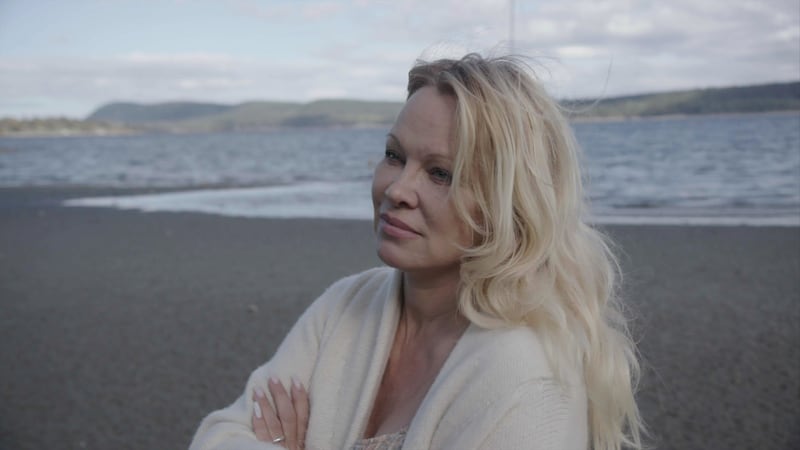
Bob Guccione of Penthouse offered her $5 million for the rights to the tape; she told him to go f**k himself. She has no regrets; she never wanted a dime from that film. Pregnant with her second child, she tried to sue IEG, the illegal distributor, for invasion of privacy. She learned the hard way that she had no rights. “I didn’t know that I was going to be completely humiliated. I remember walking into the room – all these guys in there. They had all these naked pictures of me. And the lawyers basically said, You’re in Playboy: you have no right to privacy.”
Believing they used the deposition as cover, she says they asked her explicit questions about her sex life: where she liked to do it, her preferences, her body parts. She says they made her feel “horrible”, “a piece of meat”; “that this should mean nothing to me because I’m such a whore”. It reminded her of being 12 again, when she was raped by a 24-year-old friend of a friend. “And not to bring up something heavy from my childhood, but when I was attacked by this guy, I thought everybody would know. When the tape was stolen, it felt like that. And the deposition was so brutal.” I ask if she has talked about that feeling of being raped all over again and she says it was hard “to squeeze into a [David] Letterman interview when all they want to talk about is your boobs”.
Writing the book was just crazy. I mean, I’ve never felt so much rage in my life
One night in 1998, while she was dealing with their two small kids, Lee was rocking on the floor, wailing “I want my wife back.” “I need some f***ing help around here,” she told him. “You gotta grow up. It’s not about you any more.” She saw his expression turn black. Later that night Lee was arrested for spousal and child abuse, and served six months in jail for battery. Anderson filed for divorce. Lee blamed stress: the tape, the kids and the fact that “Tommy comes third now instead of first; I don’t know how to deal with that”.
Writing her memoirs, Anderson realised the stark similarities with her own parents’ marriage. Carol, a waitress at Smitty’s Pancake House, “was the blond bombshell”; Barry, whom she calls a “poker player, chimney sweep and con man”, was a “bad boy on a motorcycle, cigarettes up in his sleeve, hair slicked back, crashing cars and in and out of trouble”. Anderson knew when to take Gerry, four years younger, out of harm’s way of their parents’ screaming. On return, they’d be “up against the wall or on top of the table just kissing, throwing themselves in the [bed]room, slamming the door. And we thought, Okay, well, that’s better. It felt like the same energy, though.” More than once, Carol bundled them up and left. For a while they lived on welfare in another town, but Pamela answered the telephone one day. It was her dad, asking the address. A lot of anger was unlocked in the process of writing, she says. A voice would come out of her that was “just crazy”. “I mean, I never felt so much rage in my life. It was a release but exhausting.” Both parents are still alive, although Barry suffered a stroke three years ago.
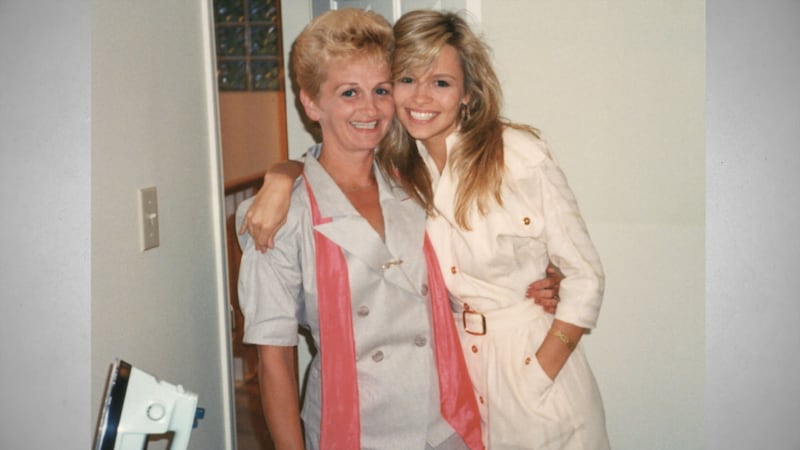
Anderson knows jealousy is a big theme in her relationships – Kid Rock was so jealous of her friendship with the photographer David LaChapelle that he refused to believe he was gay. LaChapelle and the artist Daniel Lismore both offered to marry her to save her from heterosexual men. “I said: ‘I can’t do that to my mother. I can’t marry my gay best friends.’ David’s, like, ‘We will be together forever. You can do what you want, I can do what I want, and we’ll be this crazy interesting couple ...’” Her voice drifts off in semi-comedic despair.
Increasingly she surrounded herself with like-minded outcasts, among them the singer Courtney Love and the designer Vivienne Westwood. After Westwood’s death, in December, Anderson emailed me a poem she’d written in tribute. Westwood was “like a big sister, more than a friend. She was a guiding light and she and I were aligned in our love for people and the planet.” It was Westwood who introduced her to Julian Assange. Her visits to the Ecuadorean embassy in London, wearing cocktail dresses and carrying vegan rescue parcels, became infamous. No one knew quite how to read their relationship. She said she loved him – “I still do. He’s so funny. Kind of like nerdy funny. He repeats a joke two or three times – we get it, Julian.”
In the book she calls him “sexy” and says that once, after sharing a bottle of mescal, “we passed out, and I woke at four in the morning with his cat on my chest. We’d fallen asleep following a slightly frisky, fun, alcohol-induced night.” When I ask about it, she teases: “We were close, but I didn’t say it wasn’t platonic.” He asked her to marry him. “He was joking. He goes, ‘We should get married on the steps of the embassy. I wonder if they’d arrest me?’ Then, ‘But why give up one prison for another?’” She lets out a high laugh. (Four years later, Assange married his lawyer Stella Moris.)
She knows she’s a romantic, a magical thinker, a people-pleaser who loves chivalry, fairy tales and relationships that rub her codependence all the wrong ways. But she’s also smart. She loves writing – her website has a section on “journaling” that includes her poems – and reading: Sylvia Plath, Anaïs Nin, Virginia Woolf, Doris Lessing. “I used to always carry Emily Dickinson.” She loves music and art; Nick Cave and Frida Kahlo.
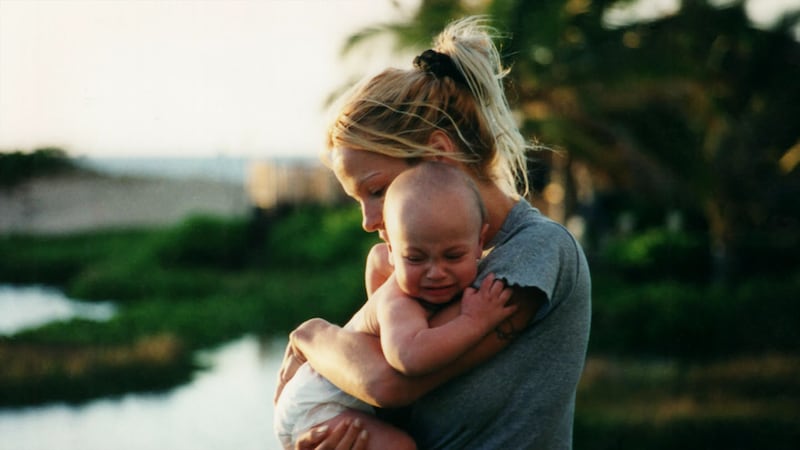
Her sons wanted her to make the documentary because they were fed up with people maligning her, not understanding who she actually was, fed up with having to defend her, all the way back to when they were fighting for her honour in the playground. “They didn’t deserve all the drama,” she says. “But, despite the gene pool, they’re perfect gentlemen. Looking at them today, I get a little choked up, because they’re such good men.”
The process of going back over her life has made her think. “Holy cow. How did I get through all that? How did I make those choices? But I also have empathy for myself. I see that I just didn’t have the tools,” she says. From now on, she needs to find her own way through so she doesn’t “make the same mistakes” all over. “I’m really clear on being alone for at least a year. It’s been scary.” She sold her house in Malibu and retreated to Canada, completely alone. “I haven’t been near my friends hardly at all, either. The capacity to be alone is the capacity to love, right? But this is going to be good for me. I’m going to be able to get through it, because now with the documentary and the book, people will see the whole character. And then – maybe – I can become a human being again.”
Pamela: A Love Story is streaming on Netflix from Tuesday, January 31st

















